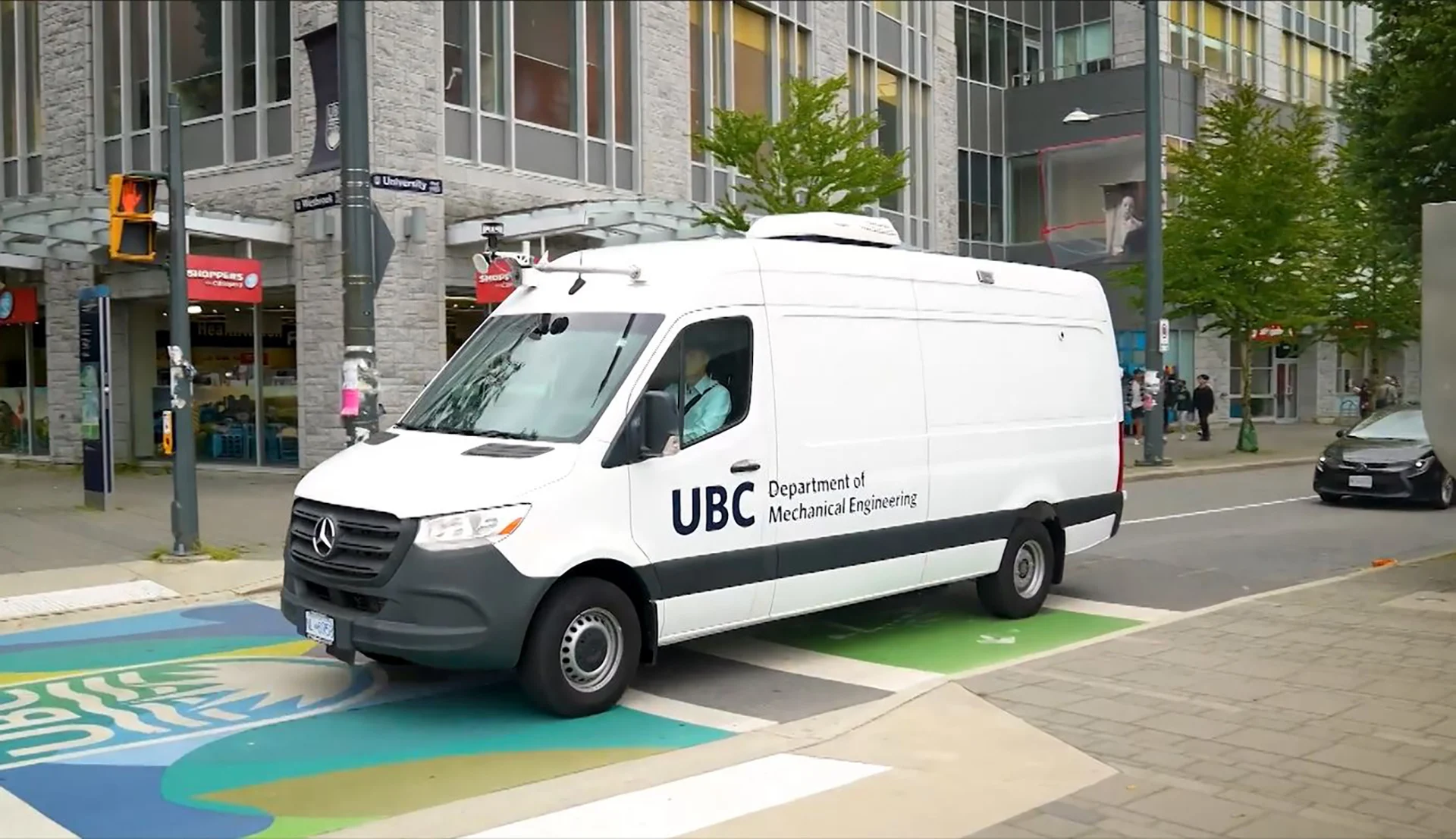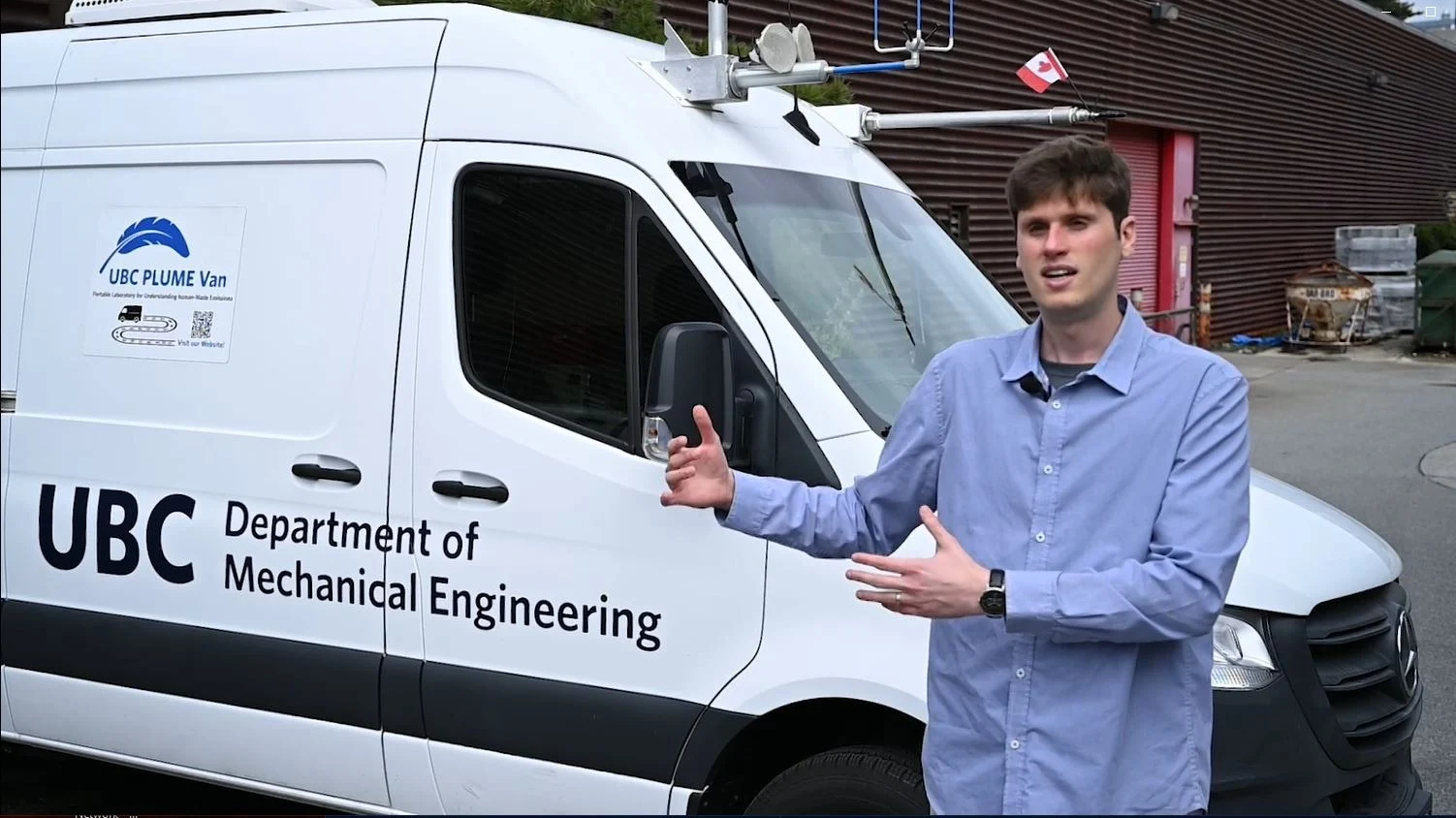
This van takes air pollution testing right to the source
UBC’s mobile laboratory is researching a new cost-effective way to measure air pollution directly within communities that could help tackle climate justice and track the impact of emission reduction solutions.
Air pollution costs humanity $2.9 trillion annually, according to a 2020 report from The Centre for Research on Energy and Clean Air.
The figures add up through sick days, medical bills, and reduced agricultural output. On top of the financial cost, it’s also costing us physically. Studies suggest that air pollution is “one of the leading causes of premature deaths globally.”
Tracking emissions is key to tackling the human-caused sources of air pollution and a team at the University of British Columbia has come up with a unique way to measure air pollution by getting right up close to the sources: the Portable Laboratory for Understanding human Made Emissions, better known as PLUME.
This mobile laboratory is able to visit any location that has road access to measure air pollutant concentrations in Vancouver and surrounding areas in real time. It’s equipped with precision instruments that can measure ground-level ozone, carbon monoxide, carbon dioxide, nitrous oxides, methane, and even the smallest ultrafine particles known as PM2.5.

Davi de Ferreyro Monticelli, an atmospheric sciences PhD student, with the PLUME van. (The Weather Network)
Testing in Vancouver
Vancouver might not seem on paper like the ideal spot to track and study air pollution. The air quality in Vancouver is deemed healthy on average and poses little health risk, and it’s considered one of the cleanest major cities in the world. But it is still an urban hub where unhealthy short-term spikes are not uncommon.
“It has a really unique and complex set of air pollutants which include the usual suspects. Things like traffic, but we also have a large port and its associated marine pollutants. There’s emissions from nearby agricultural activity. There is also wildfire smoke in the summer. So there is a huge complex mix of sources,” Naomi Zimmerman, an assistant professor of applied science at the University of British Columbia, told The Weather Network.
On top of the sources, Vancouver also has a complex topography.
“There is the Fraser Valley and the surrounding mountain ranges. Meteorology is also quite complex, so with all of this we expect the region to have a fair amount of variability in time and space of air pollution,” Zimmerman added.
Methods of testing
Typically, there are only two ways to measure air quality: expensive air quality monitoring stations and low-cost sensors; however, the data from the latter was not always reliable.
“They can be sensitive to other pollutants, they can drift over time, they can be sensitive to changes in relative humidity and temperature, [and] they really require a lot of calibration,” said Zimmerman
But now the PLUME van offers a third option.
“You can bring the van to different communities with incredible instruments inside and sample the air and report back to them saying you are being affected by this type of air pollutant and it could be because of this industry,” said Davi de Ferreyro Monticelli, an atmospheric sciences PhD student who gave TWN a touring demonstration of the PLUME van in action.
As such, the PLUME van can be an effective tool for climate justice: a cheaper monitoring system that provides access to data about on-the-ground impacts.
The PLUME van isn't an EV, however, Zimmerman notes: "While the van runs on diesel as there are no electric vans currently available in the market of the size required due to the size of the instrumentation, PLUME complies with the most rigorous emissions standards—the LEV III Super Ultra Low Emission Vehicle standards. The instrumentation is all electrically-powered, supported by an advanced inverter and marine batteries, making PLUME one of the most environmentally friendly mobile laboratories in the world."

The air pollution monitoring dashboard in the PLUME van. (The Weather Network)
Testing solutions
Aside from being able to tell where air pollutants are high and what sources might be causing them, the van is also going to be used in trying to tackle some of the local air pollution problems.
Over the next few years a broader team at UBC is going to be working closely with different industry partners to test out creative strategies, like optimizing vehicles and testing lower carbon fuels. Zimmerman explained they will be taking the PLUME van on site to different ports to test the air quality in real time and see if these ideas are actually helping reduce air pollution.
“When people think about vehicles and transportation they think of electrification, and that is a great solution for light-duty vehicles. But for really big vehicles, big ships, large trucks these are vehicles that are not easily electrified,” she said. “So as part of the decarbonization strategy for this sort of goods movement space there are going to have to be some creative strategies that are deployed to meet our aggressive climate targets.”
Thumbnail image: UBC's Portable Laboratory for Understanding human Made Emissions (PLUME) in action. (The Weather Network)












